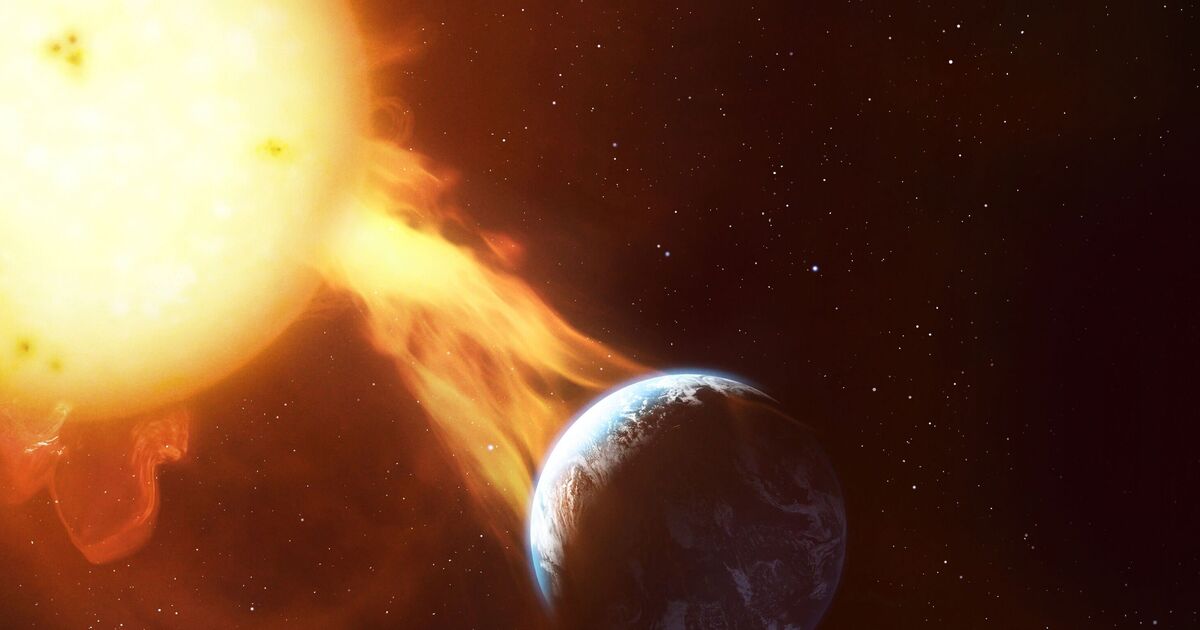Astromoners are predicting a solar storm “tsunami” will strike Earth today following multiple flares and CME’s (Coronal Mass Ejections) from the sun. One of the flares is thought to be among the most powerful eruptions of the current solar cycle, with serious implications for space weather and Earth’s electromagnetic environment.
The flare is capable of disrupting satellites, high-frequency radio and high-altitude flights. As the initial waves of the solar “tsunami” approach Earth today, space weather forecasters are issuing a heightened alert for a rare “cannibal CME” event.
Multiple coronal mass ejections (CMEs) from recent X-class flares—including yesterday’s X1.7 and today’s record X5.0 from sunspot AR4274—are racing toward us at speeds up to 1,000 km/s.
The lead CME, which erupted on November 9, may already be glancing our magnetosphere, causing minor radio blackouts over Europe and Africa, while trailing blasts could catch up and merge en route—a phenomenon dubbed a “cannibal” in reference to the way in which the faster rear wave devours the front one, amplifying its punch.
If the merger occurs before impact, expected late November 11 into 12, it could trigger G3 (strong) to G4 (severe) geomagnetic storms, far beyond the moderate G2 levels initially predicted.
This means brighter auroras visible as far south as Alabama or northern Spain, but also heightened risks: satellite operators report potential drag increases in low-Earth orbit, while power grids in high-latitude regions like Scandinavia and Canada brace for voltage surges reminiscent of the 2003 Halloween storms.
If today’s “solar tsunami” were to escalate to Carrington Event proportions—the 1859 superstorm that fried telegraph wires and lit auroras over Hawaii—modern society would face serious consequences.
A comparable hit could black out power grids across continents for weeks, crippling hospitals, water pumps, and ATMs.
Satellites would tumble from orbit, GPS vanish, and trillions in economic damage ensue, per NASA estimates—far worse than the 1989 Quebec blackout.
Europe’s recent simulation painted a grim picture: total e-comms collapse, navigation paralysis, and supply chain chaos.
While unlikely, this underscores our fragility—prepare now, or pay a heavy price later.
Speaking to Express.co.uk in 2019 during the UK Space Conference, space weather expert Mike Willis warned that a colossal solar storm could cripple the UK, slamming satellites and the National Grid with £5 billion in damages over five days, according to the UK Space Agency.
As head of space safety, Mr Willis highlighted the dread of “extreme events which would be much more than your normal flare. This could actually cause serious disruption if we don’t forecast it and if we don’t do anything about it.”
Satellites risk solar cell damage and orbit shifts from coronal mass ejections, while geomagnetic currents could trigger transformer meltdowns—echoing a recent 5% power plunge.
Mr Willis added: “The real effect… is the impact on satellite navigation… turbulence in [the atmosphere] could make the signals… not receivable for several hours to days.
“Knowing when an event is coming allows the grid to take mitigation activities.”

